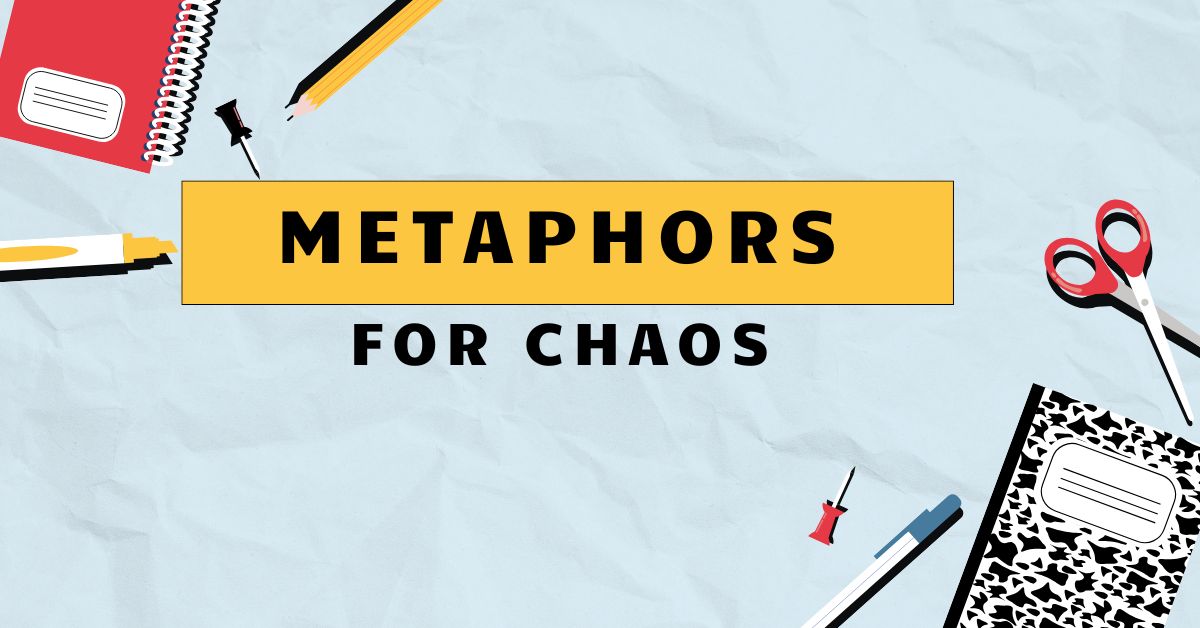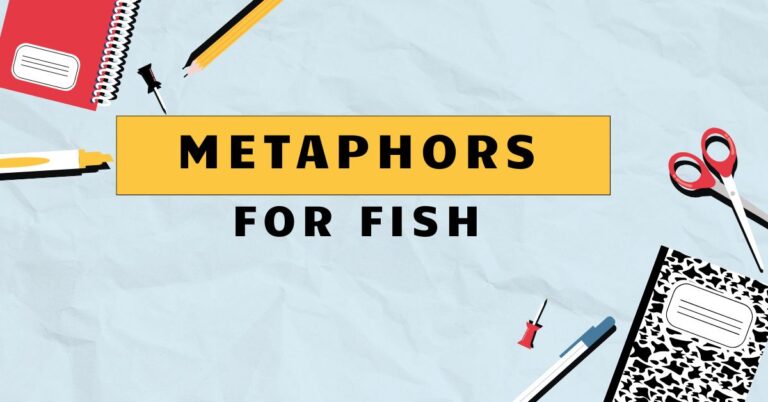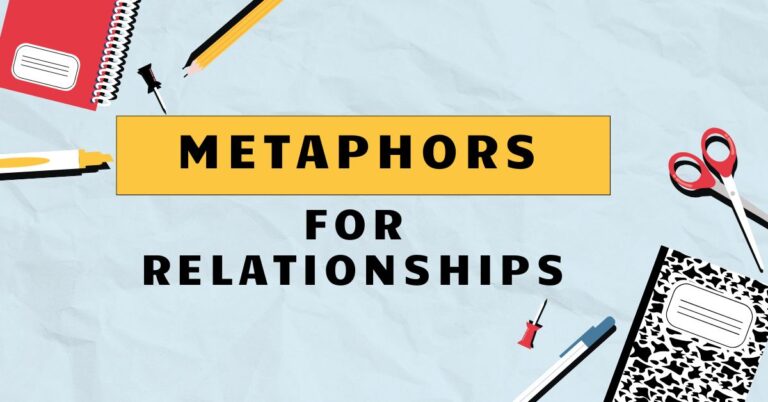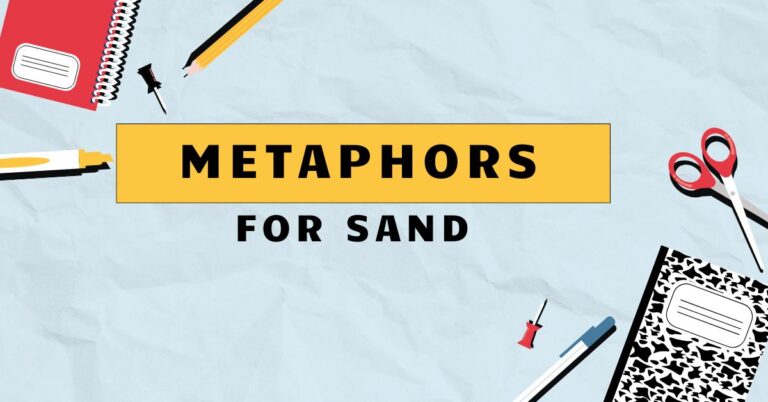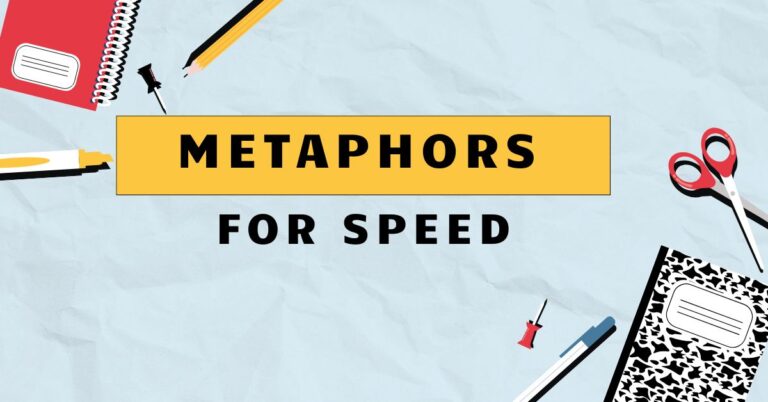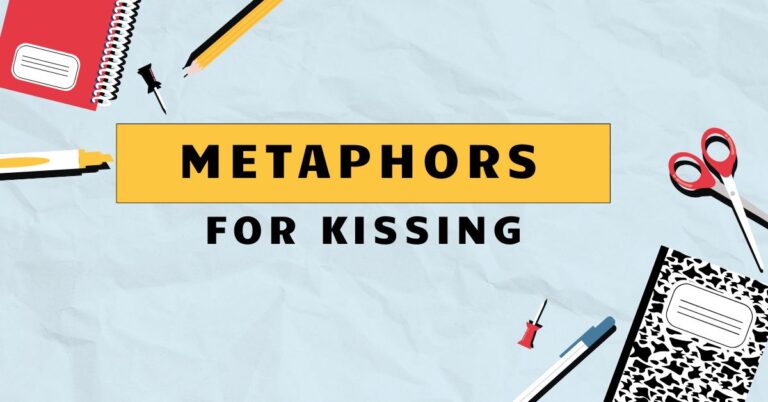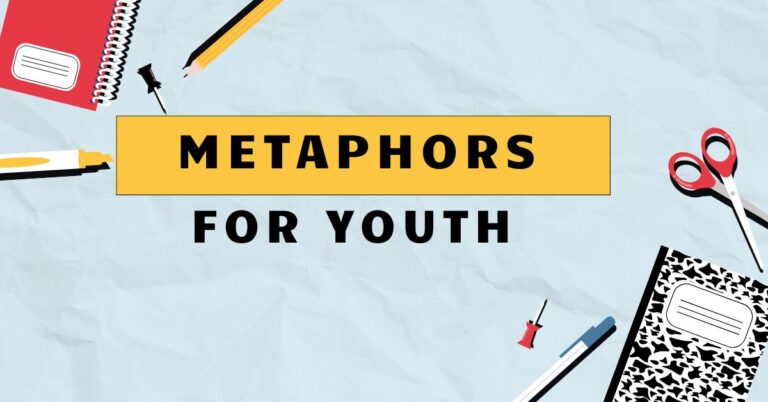45 Metaphors for Chaos: Understanding Figurative Language
Understanding metaphors for chaos is crucial for mastering figurative language and enhancing communication skills. Metaphors allow us to convey complex ideas and emotions by drawing comparisons between seemingly unrelated concepts.
For those seeking to enrich their writing, improve comprehension of literature, or simply communicate more effectively, this article provides a comprehensive guide to understanding and using metaphors for chaos. Students, writers, and language enthusiasts alike will benefit from the detailed explanations, examples, and practice exercises included.
Table of Contents
- Definition of Metaphors for Chaos
- Structural Breakdown of Chaos Metaphors
- Types and Categories of Chaos Metaphors
- Examples of Metaphors for Chaos
- Usage Rules for Metaphors of Chaos
- Common Mistakes When Using Chaos Metaphors
- Practice Exercises
- Advanced Topics in Chaos Metaphors
- Frequently Asked Questions
- Conclusion
Definition of Metaphors for Chaos
A metaphor for chaos is a figure of speech that describes a situation or state of disorder, confusion, or unpredictability by comparing it to something else that embodies those characteristics. It does not use “like” or “as,” as a simile would, but instead directly equates the situation to the chaotic element.
The primary function of a metaphor for chaos is to provide a vivid and relatable image that helps the audience understand the intensity and nature of the disorder being described. These metaphors are commonly used in literature, poetry, everyday conversation, and even scientific discourse to illustrate complex systems and unpredictable events.
Metaphors, in general, are essential tools in language for conveying abstract ideas in more concrete terms. When applied to chaos, they help make the intangible feeling of disorder more understandable.
Consider, for example, describing a political landscape as a “stormy sea.” This instantly conveys the turbulence and unpredictability of the situation, bringing the abstract concept of political instability into sharper focus. The effectiveness of a metaphor lies in its ability to create a strong mental image and emotional resonance.
The context in which a metaphor for chaos is used greatly influences its interpretation. A metaphor that works well in a literary setting may not be appropriate in a scientific report.
Similarly, a metaphor that resonates with one audience may not resonate with another. Therefore, it is crucial to consider the audience, the purpose of the communication, and the overall tone when selecting and using metaphors for chaos.
Structural Breakdown of Chaos Metaphors
Understanding the structure of a metaphor helps in creating and interpreting them effectively. A metaphor consists of two main elements: thetenorand thevehicle.
The tenor is the subject being described, while the vehicle is the object or concept to which the subject is being compared. In the context of chaos metaphors, the tenor is some form of disorder or unpredictability, and the vehicle is something inherently chaotic.
For instance, in the metaphor “The project was a runaway train,” the tenor is the project, and the vehicle is a runaway train. The comparison highlights the uncontrolled and potentially destructive nature of the project.
The effectiveness of this metaphor relies on the shared understanding of what a runaway train represents – a lack of control, high speed, and potential for disaster.
The relationship between the tenor and the vehicle is crucial. A good metaphor establishes a clear and relevant connection between the two, allowing the audience to easily grasp the intended meaning.
The strength of the metaphor also depends on the vividness and specificity of the vehicle. A more concrete and descriptive vehicle will create a stronger and more memorable image.
Furthermore, the implied characteristics of the vehicle are transferred to the tenor. In the example above, the characteristics of a runaway train – speed, danger, lack of control – are all attributed to the project, thereby emphasizing its chaotic nature.
This transfer of characteristics is what makes metaphors such a powerful tool for communication.
Types and Categories of Chaos Metaphors
Metaphors for chaos can be categorized based on the specific type of chaotic element they invoke. Understanding these categories can help in selecting the most appropriate metaphor for a given situation.
Natural Disaster Metaphors
These metaphors draw comparisons between chaos and natural disasters such as storms, earthquakes, and floods. They emphasize the destructive and uncontrollable nature of the situation.
Mechanical Breakdown Metaphors
These metaphors compare chaos to the breakdown of machinery or systems. They highlight the loss of order and predictability.
Social Upheaval Metaphors
These metaphors relate chaos to social unrest, riots, or revolutions. They emphasize the disruption of established norms and structures.
Abstract Concept Metaphors
These metaphors use abstract concepts such as madness, anarchy, or pandemonium to describe chaos. They focus on the intangible aspects of disorder.
Animalistic Metaphors
These metaphors often involve wild animals or swarms to convey a sense of uncontrolled energy and unpredictability, evoking primal instincts and untamed forces.
Examples of Metaphors for Chaos
Here are several examples of metaphors for chaos, categorized for clarity. Each example includes an explanation of the tenor, vehicle, and the connection between them.
Examples of Natural Disaster Metaphors
The following table contains examples where chaos is compared to natural disasters. These metaphors often evoke a sense of overwhelming and destructive force.
| Metaphor | Tenor (Subject) | Vehicle (Comparison) | Explanation |
|---|---|---|---|
| The debate was a hurricane of conflicting opinions. | The debate | Hurricane | The debate was intense, destructive, and difficult to navigate. |
| Her mind was an earthquake of conflicting thoughts. | Her mind | Earthquake | Her thoughts were shaking and unstable, causing internal turmoil. |
| The market crash was a tsunami that wiped out fortunes. | The market crash | Tsunami | The market crash was sudden, overwhelming, and devastating. |
| The project’s failure was a volcano that had been brewing for months. | The project’s failure | Volcano | The failure was explosive, inevitable, and the result of long-term issues. |
| The office became a blizzard of paperwork after the merger. | The office | Blizzard | The office was overwhelmed with a chaotic and unmanageable amount of paperwork. |
| Their relationship was a wildfire, burning out of control. | Their relationship | Wildfire | Their relationship was intense, destructive, and impossible to contain. |
| The political climate was a tempest, full of rage and uncertainty. | The political climate | Tempest | The political situation was turbulent, unpredictable, and filled with conflict. |
| The city was a flood of refugees seeking shelter. | The city | Flood | The city was overwhelmed by a large and unmanageable influx of refugees. |
| His emotions were a landslide, burying him under their weight. | His emotions | Landslide | His emotions were overwhelming, sudden, and impossible to resist. |
| The news spread like a drought of hope, leaving everyone despairing. | The news | Drought | The news brought a pervasive sense of hopelessness and lack of opportunity. |
| The company’s restructuring was a monsoon of changes, flooding every department. | The company’s restructuring | Monsoon | The restructuring brought a deluge of changes that affected every aspect of the company. |
| The scandal erupted like a geyser, spewing accusations and controversy. | The scandal | Geyser | The scandal burst forth suddenly and forcefully, creating a public uproar. |
| The protest was a whirlwind of passion and anger. | The protest | Whirlwind | The protest was intense, chaotic, and swept through the city with force. |
| The economic crisis was a glacial period, freezing investments and growth. | The economic crisis | Glacial period | The crisis caused a prolonged period of stagnation and decline in the economy. |
| The project’s delays were a sinkhole, swallowing time and resources. | The project’s delays | Sinkhole | The delays consumed significant amounts of time and resources, causing further problems. |
| The argument was a maelstrom of accusations and denials. | The argument | Maelstrom | The argument was a chaotic and turbulent situation with no clear resolution. |
| The factory fire was a furnace of destruction, consuming everything in its path. | The factory fire | Furnace | The fire was intensely hot and destructive, leaving nothing untouched. |
| The political debate was a sandstorm, blinding everyone with rhetoric. | The political debate | Sandstorm | The debate was confusing and obscured the truth with excessive and misleading rhetoric. |
| The negotiation was a snowball rolling downhill, gathering momentum and problems. | The negotiation | Snowball | The negotiation started small but quickly grew into a larger, more complex, and problematic situation. |
| The team’s morale was a fog, obscuring their vision and motivation. | The team’s morale | Fog | The team’s low morale created confusion and made it difficult to see a clear path forward. |
Examples of Mechanical Breakdown Metaphors
This table provides examples comparing chaos to the breakdown of machines or systems, highlighting the loss of control and predictability.
| Metaphor | Tenor (Subject) | Vehicle (Comparison) | Explanation |
|---|---|---|---|
| The organization was a broken machine, sputtering and failing. | The organization | Broken machine | The organization was dysfunctional and unable to operate effectively. |
| His presentation was a train wreck, veering off course and crashing. | His presentation | Train wreck | His presentation was disorganized, confusing, and ultimately unsuccessful. |
| The project became a runaway train, impossible to stop or control. | The project | Runaway train | The project was out of control and headed for disaster. |
| The software update was a glitch that caused widespread chaos. | The software update | Glitch | The update introduced unexpected problems and disruptions. |
| Her career was a flat tire on the road to success. | Her career | Flat tire | Her career experienced a sudden and unexpected setback. |
| The company’s finances were a ticking time bomb, ready to explode. | The company’s finances | Ticking time bomb | The financial situation was precarious and posed an imminent threat. |
| The negotiations stalled; they were a broken record, repeating the same arguments. | The negotiations | Broken record | The negotiations were stuck in a loop, unable to make progress. |
| The system was a house of cards, ready to collapse at any moment. | The system | House of cards | The system was fragile and vulnerable to failure. |
| The plan was a leaky faucet, slowly draining resources. | The plan | Leaky faucet | The plan was inefficient and gradually wasting valuable resources. |
| The business was a sinking ship, destined to fail. | The business | Sinking ship | The business was in severe trouble and likely to collapse. |
| The project’s timeline was a roller coaster of deadlines and delays. | The project’s timeline | Roller coaster | The timeline experienced unpredictable ups and downs, causing stress and uncertainty. |
| The bureaucracy was a maze, trapping everyone in its complexity. | The bureaucracy | Maze | The bureaucratic system was confusing and difficult to navigate. |
| The network was a spiderweb of connections, easily tangled and broken. | The network | Spiderweb | The network was intricate but fragile, prone to disruptions. |
| The contract was a minefield of legal jargon and hidden clauses. | The contract | Minefield | The contract was full of potential dangers and traps. |
| The organization was a rusty cog in the machine of progress. | The organization | Rusty cog | The organization was outdated and hindering progress. |
| The team’s communication was a broken telephone, distorting every message. | The team’s communication | Broken telephone | The team’s communication was unreliable and led to misunderstandings. |
| The regulations were a bottleneck, slowing down the entire process. | The regulations | Bottleneck | The regulations created a point of congestion that hindered efficiency. |
| The project’s budget was a black hole, swallowing funds without end. | The project’s budget | Black hole | The budget consumed vast amounts of money without producing results. |
| The company’s strategy was a hamster wheel, endlessly spinning without progress. | The company’s strategy | Hamster wheel | The strategy involved a lot of activity but no real advancement. |
| The meeting was a circus, full of clowns and chaos. | The meeting | Circus | The meeting was disorganized, absurd, and unproductive. |
Examples of Social Upheaval Metaphors
The following table presents metaphors that compare chaos to social unrest, emphasizing the disruption of established norms.
| Metaphor | Tenor (Subject) | Vehicle (Comparison) | Explanation |
|---|---|---|---|
| The city was a powder keg of social unrest. | The city | Powder keg | The city was on the verge of violent social upheaval. |
| The protest was a swarm of angry citizens. | The protest | Swarm | The protest was a large, chaotic, and potentially dangerous gathering. |
| The classroom was a riot of noise and activity. | The classroom | Riot | The classroom was filled with uncontrolled and disruptive behavior. |
| The political debate was a battleground of conflicting ideologies. | The political debate | Battleground | The debate was fiercely contested and full of animosity. |
| The community was a melting pot of cultures and conflicts. | The community | Melting pot | The community was a mix of diverse elements, often leading to tension. |
| The town hall meeting was a free-for-all of accusations and defenses. | The town hall meeting | Free-for-all | The meeting lacked order and was filled with unrestrained conflict. |
| The office was a zoo of competing personalities. | The office | Zoo | The office environment was chaotic and filled with unpredictable behavior. |
| The political landscape was a chess game of power plays. | The political landscape | Chess game | The political situation was strategic, complex, and full of maneuvering. |
| The company merger was a tug-of-war between departments. | The company merger | Tug-of-war | The merger involved intense competition and conflict between different groups. |
| The family reunion was a three-ring circus of drama and entertainment. | The family reunion | Three-ring circus | The reunion was chaotic, overwhelming, and full of exaggerated emotions. |
| The negotiation was a boxing match of demands and concessions. | The negotiation | Boxing match | The negotiation involved intense confrontation and strategic maneuvering. |
| The online forum was a war zone of flame wars and insults. | The online forum | War zone | The forum was filled with aggressive and hostile interactions. |
| The courtroom was a theater of legal arguments and emotional appeals. | The courtroom | Theater | The courtroom was a stage for dramatic and carefully constructed performances. |
| The project team was a band of rivals working towards a common goal. | The project team | Band of rivals | The team members had conflicting interests but were united by a shared objective. |
| The election was a roller coaster of polls and predictions. | The election | Roller coaster | The election results fluctuated wildly, creating uncertainty and excitement. |
| The discussion was a crossfire of opinions and rebuttals. | The discussion | Crossfire | The discussion involved rapid and intense exchanges of differing viewpoints. |
| The movement was a grassroots rebellion against the establishment. | The movement | Grassroots rebellion | The movement was a spontaneous and widespread uprising against authority. |
| The committee was a roundtable of conflicting interests. | The committee | Roundtable | The committee brought together diverse and often opposing perspectives. |
| The debate was a jungle of arguments and counterarguments. | The debate | Jungle | The debate was confusing and difficult to navigate due to the complexity of the arguments. |
| The conference was a hive of activity and networking. | The conference | Hive | The conference was a bustling and energetic environment with many interactions. |
Usage Rules for Metaphors of Chaos
Using metaphors effectively requires adherence to certain rules. First, the metaphor should be relevant and appropriate to the context.
A metaphor that is too obscure or far-fetched will confuse the audience rather than clarify the situation. Second, the metaphor should be consistent with the overall tone and style of the communication.
A humorous metaphor may be inappropriate in a serious discussion.
Third, avoid mixed metaphors, which occur when two or more metaphors are combined in a way that creates a nonsensical or contradictory image. For example, “He was skating on thin ice while navigating a sea of troubles” is a mixed metaphor because skating on ice and navigating a sea are incompatible images.
Fourth, ensure that the metaphor adds value to the communication by providing insight or creating a memorable image. A weak or cliché metaphor will detract from the message.
Key Considerations:
- Context: Always consider the setting and audience.
- Relevance: Ensure the comparison is logical and meaningful.
- Consistency: Maintain a consistent tone and avoid mixed metaphors.
- Originality: Strive for fresh and impactful comparisons rather than clichés.
Common Mistakes When Using Chaos Metaphors
One common mistake is using clichés. Overused metaphors like “a perfect storm” can lose their impact and sound unoriginal.
Instead, strive for fresh and creative comparisons. Another mistake is using mixed metaphors, which can confuse the audience.
For example, “The project was a runaway train heading for a brick wall of success” combines incompatible images. Finally, ensure that the metaphor is appropriate for the audience.
A metaphor that is too complex or culturally specific may not be understood by everyone.
Here’s a table illustrating common mistakes with correct and incorrect examples:
| Mistake | Incorrect Example | Correct Example |
|---|---|---|
| Cliché | The situation was a perfect storm. | The situation was a pressure cooker about to explode. |
| Mixed Metaphor | He was drowning in a sea of red tape while climbing the ladder of success. | He was drowning in a sea of red tape. |
| Inappropriate Metaphor | The company’s reorganization was like entropy increasing in a closed system (used for a general audience). | The company’s reorganization brought increased disorder and confusion. |
| Lack of Clarity | The problem was a thing. | The problem was a tangled web of dependencies. |
| Overly Complex | The project was a fractal of recursive failures. | The project was a series of interconnected failures. |
Practice Exercises
Test your understanding of metaphors for chaos with these exercises.
Exercise 1: Identifying Metaphors
Identify the metaphors for chaos in the following sentences.
| Question | Answer |
|---|---|
| 1. The meeting was a zoo. | zoo |
| 2. Her life was a whirlwind. | whirlwind |
| 3. The project was a sinking ship. | sinking ship |
| 4. His emotions were a tempest. | tempest |
| 5. The city was a pressure cooker. | pressure cooker |
| 6. The debate was a battlefield. | battlefield |
| 7. The classroom was a riot. | riot |
| 8. Their relationship was a wildfire. | wildfire |
| 9. The market crash was a tsunami. | tsunami |
| 10. The organization was a broken machine. | broken machine |
Exercise 2: Creating Metaphors
Create your own metaphors for the following situations.
| Situation | Possible Metaphor |
|---|---|
| 1. A disorganized office | A junkyard of forgotten tasks. |
| 2. A confusing lecture | A labyrinth of abstract concepts. |
| 3. A chaotic family gathering | A circus of personalities and stories. |
| 4. A turbulent political climate | A stormy sea of ideologies. |
| 5. A failing business | A house of cards on the brink of collapse. |
| 6. An out-of-control project | A runaway train hurtling towards disaster. |
| 7. A heated argument | A volcanic eruption of pent-up emotions. |
| 8. A crowded city street | A river of humanity flowing in every direction. |
| 9. A cluttered mind | An attic filled with forgotten memories and thoughts. |
| 10. A sudden market crash | An avalanche of falling stocks and shattered dreams. |
Exercise 3: Correcting Mixed Metaphors
Identify and correct the mixed metaphors in the following sentences.
| Question | Corrected Answer |
|---|---|
| 1. The project was a rollercoaster riding on thin ice. | The project was a rollercoaster headed for disaster. OR The project was skating on thin ice. |
| 2. He was climbing the corporate ladder while navigating a sea of troubles. | He was climbing the corporate ladder. OR He was navigating a sea of troubles. |
| 3. The plan was a house of cards floating in a sea of uncertainty. | The plan was a house of cards about to collapse. OR The plan was floating in a sea of uncertainty. |
| 4. The company was a sinking ship trying to catch a rising tide. | The company was a sinking ship. OR The company was trying to catch a rising tide. |
| 5. The debate was a battlefield covered in a blanket of confusion. | The debate was a battlefield. OR The situation was covered in a blanket of confusion. |
| 6. The partnership was a wildfire trying to build a solid foundation. | The partnership was a wildfire burning out of control. OR The partnership was trying to build a solid foundation. |
| 7. The economy was a rollercoaster navigating a minefield. | The economy was a rollercoaster. OR The economy was navigating a minefield. |
| 8. The negotiation was a tug-of-war skating on thin ice. | The negotiation was a tug-of-war. OR The negotiation was skating on thin ice. |
| 9. The merger was a train wreck trying to climb the ladder of success. | The merger was a train wreck. OR The merger was trying to climb the ladder of success. |
| 10. The strategy was a hamster wheel lost in a sea of opportunities. | The strategy was a hamster wheel. OR The company was lost in a sea of opportunities. |
Advanced Topics in Chaos Metaphors
For advanced learners, exploring the philosophical and psychological implications of chaos metaphors can be insightful. Chaos theory, a branch of mathematics and physics, studies complex systems whose behavior is highly sensitive to initial conditions – a concept often illustrated through metaphors.
Understanding how these metaphors reflect our perception of order and disorder can deepen comprehension.
Consider the use of chaos metaphors in literature. Authors often employ these metaphors to explore themes of societal breakdown, personal turmoil, and the struggle for control.
Analyzing the specific metaphors used and their impact on the narrative can provide a richer understanding of the text. Furthermore, the cultural context of these metaphors is significant.
Different cultures may have different associations with certain chaotic elements, influencing the interpretation of the metaphor.
Further Exploration:
- Chaos theory and its influence on metaphorical language.
- The use of chaos metaphors in different literary genres.
- Cultural variations in the interpretation of chaos metaphors.
- The psychological impact of chaos metaphors on readers and listeners.
Frequently Asked Questions
Here are some frequently asked questions about metaphors for chaos.
- What is the difference between a metaphor and a simile?
- Why are metaphors for chaos useful?
- How can I avoid using clichés in my metaphors?
- What is a mixed metaphor, and how can I avoid it?
- How do I choose the right metaphor for a particular situation?
- Can metaphors for chaos be used in scientific writing?
- How do cultural differences affect the interpretation of metaphors?
- What role do metaphors play in understanding complex systems?
- Are there any situations where using a metaphor for chaos is inappropriate?
- How can I improve my ability to create effective metaphors?
A metaphor directly equates two unlike things, while a simile uses “like” or “as” to make a comparison. For example, “The meeting was a zoo” (metaphor) versus “The meeting was like a zoo” (simile).
They provide vivid and relatable images that help people understand complex and often overwhelming situations. They add emotional depth and can make abstract concepts more concrete.
Strive for originality by thinking outside the box and exploring less common comparisons. Consider the specific characteristics of the situation you are describing and find a unique way to represent them.
A mixed metaphor combines two or more incompatible metaphors, creating a nonsensical image. To avoid it, ensure that all elements of your metaphor are logically consistent.
Consider the audience, the purpose of your communication, and the overall tone. Choose a metaphor that is relevant, appropriate, and adds value to your message.
Yes, but they should be used sparingly and with caution. Ensure that the metaphor clarifies rather than obscures the scientific concept.
It is generally more appropriate in introductory or explanatory contexts rather than in presenting empirical data.
Different cultures may have different associations with certain elements, influencing how a metaphor is understood. Be mindful of your audience and choose metaphors that are likely to resonate with them.
Metaphors can help simplify complex systems by providing relatable analogies. They allow us to grasp the overall behavior of the system without getting bogged down in technical details.
Yes, in situations that require precise and literal language, such as legal documents or technical manuals. Also, avoid using metaphors that could be offensive or insensitive to certain audiences.
Practice regularly, read widely, and pay attention to the metaphors used by others. Experiment with different comparisons and ask for feedback on your metaphors.
Conclusion
Mastering metaphors for chaos is a valuable skill for enhancing communication and understanding complex ideas. By grasping the structure, types, and usage rules of these metaphors, you can effectively convey the intensity and nature of disorder in various contexts.
Avoiding common mistakes, such as using clichés or mixed metaphors, will ensure that your communication remains clear and impactful. Practice creating and analyzing metaphors to refine your skills and expand your linguistic toolkit.
Remember that the key to using metaphors effectively lies in relevance, consistency, and originality. By carefully considering the audience, purpose, and tone of your communication, you can select and craft metaphors that resonate and illuminate.
Continue to explore the advanced topics and cultural nuances of metaphors to deepen your understanding and appreciation of this powerful linguistic tool. With practice and attention to detail, you can harness the power of metaphors for chaos to enrich your writing, enhance your comprehension, and communicate with greater precision and impact.

